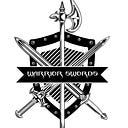The Legacy of the Japanese Tsurugi Sword: More Than Just a Weapon
In Japan, swords have transcended their function as mere weapons. They’ve embodied art, and religious symbols, and even held a touch of the divine. The Tsurugi, also known as a Ken, is a prime example. This straight, double-edged sword stands as one of the oldest types used in ancient Japan.
“In Japan’s past, swords were more than just weapons — they were art and symbols of faith.”
A History Steeped in Transformation
The Tsurugi’s journey reflects the evolution of Japanese warfare. In the Yayoi Period (400 BCE — 300 CE), bronze Tsurugi blades may have served a dual purpose — tools for battle and ceremonial objects alongside other rituals. By the Kofun Period (250–538 CE), the Tsurugi became a vital weapon, its straight design a dominant force. However, as fighting styles shifted, the limitations of the straight blade became apparent. The Heian Period (794–1185 CE) saw the rise of curved swords, favoring slashing techniques. The Tachi, with its distinctive curve, became the weapon of choice, marking the decline of the Tsurugi’s reign.
Beyond the Battlefield: Characteristics of the Tsurugi
The Tsurugi’s form evolved alongside its use. Initially crafted from stone, then bronze, it eventually transitioned to iron. A unique feature was the forging of the handle and blade as one unit, allowing for uniform hardening. Later, Japanese swordsmiths developed tempering techniques, creating a harder cutting edge for increased durability.
The Tsurugi’s blade boasted a straight design with two sharp edges, sometimes widening near the tip. Early examples might feature shamanic symbols, while later ones showcased intricate carvings or even Sanskrit characters (bonji). The size varied depending on the blade form, typically ranging from 30 to 60 centimeters. However, the legendary Kusanagi no Tsurugi, a part of Japan’s imperial regalia, is said to be a staggering 84 centimeters long, though its true appearance remains shrouded in mystery.
Even the mounting of the Tsurugi reflected its purpose. Ceremonial swords might feature a vajra hilt, a three-pronged design associated with Tantric Buddhism. Scabbards ranged from plain wood (shirasaya) for everyday use to decorative lacquered scabbards, adding a touch of elegance to these revered weapons.
Tsurugi vs. Katana vs. Jian: A Tale of Three Blades
The Tsurugi bears some resemblance to the Chinese Jian, another straight, double-edged sword. However, the Jian might have a slight curve and a different hilt design. The iconic katana, favored by the samurai, stands in stark contrast. Its single-edged, curved blade is designed for slashing attacks, unlike the Tsurugi’s focus on thrusting. While the Tsurugi dominated early Japanese warfare, the katana’s design proved more effective in later periods.
The Enduring Legacy: More Than Just a Relic
The Tsurugi’s significance extends far beyond its role as a weapon. It’s deeply entwined with Shinto mythology. The Kusanagi no Tsurugi, also known as the Grass-Cutting Sword, is a legendary blade and one of the Three Imperial Regalia of Japan, symbolizing the divine lineage of the emperors. This sword continues to hold immense importance during the emperor’s enthronement ceremony.
The Tsurugi serves as a reminder of a bygone era, a testament to the evolution of Japanese warfare and swordsmithing techniques. While no longer wielded on the battlefield, the Tsurugi’s legacy endures as a symbol of art, tradition, and the enduring spirit of Japan.
“At Japanese enthronement ceremonies, the Tsurugi holds significant importance, representing tradition and imperium.”
